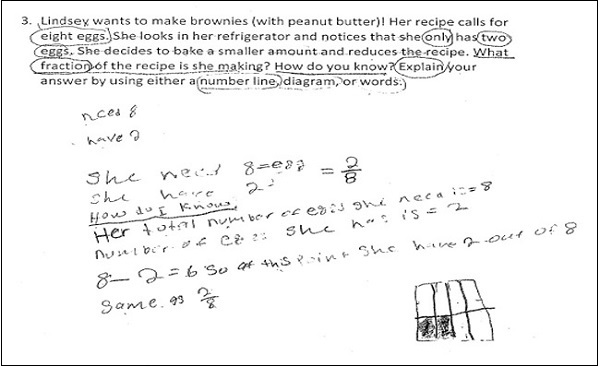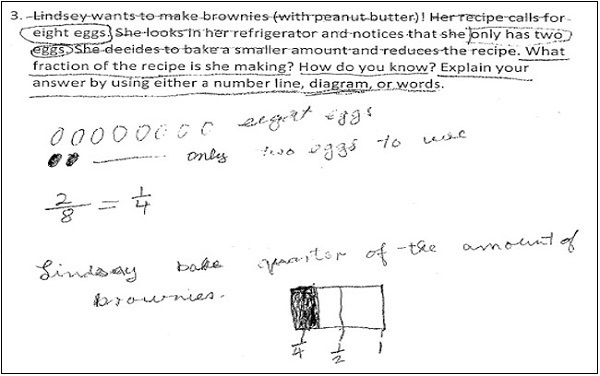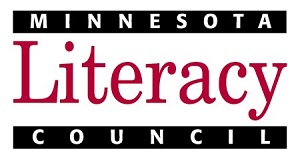- MN ABE Connect
- Archive
- ELA + Math = ? (Part 2 of 3)
 March 26, 2018
March 26, 2018
ELA + Math = ? (Part 2 of 3)
Lindsey Cermak, GED Instructor/Coordinator“Teacher, I can do the math, but I haaaaate word problems!”
We have all heard students complain about math word problems. I teach math and GED preparation for the Minnesota Literacy Council. I often hear complaints such as: “I never know what they are saying or what the problem is asking.”
With students’ already adverse reaction to math, even being a good reader may not be enough to help students overcome the fixed mindset that they “just can’t do word problems.” Having a strategy, a routine, that provides a way to break problems down may prove to be very useful in helping students confront this math phobia. This is where “crossfitting” close reading strategies and math problem solving comes in!
I tried using a close reading strategy in my classroom, and it seemed to go over very well. I believe it is worth my time to make it a routine. Plus, it simultaneously addresses both ELA and Math practices.
- ELA Reading Anchor 1: Read closely to determine what the text says. (The essence of any math word problem!)
- ELA Reading Anchor 7: Integrate & evaluate content presented in diverse media formats, including visually and quantitatively, as well as in words. (Dealing with numbers and words together…that’s math word problems in a nutshell!)
- Math Practice 1: Make sense of problems and persevere in solving them. (The steps offer a ‘way into’ a difficult problem.)
- Math Practice 3: Construct viable arguments and critique the reasoning of others. (Hurrah for math conversations!)
Below is the close reading strategy referenced in Part 1 on crossfitting ELA and Math. I used a very similar routine with my students. My comments about these steps are in green!
- PUT DOWN your pencil! Read the story problem for gist. (Too many students start solving the problem before they finish reading it. This step forces students to slow down and start to see the problem beginning to end before jumping to a solution.)
- Retell the story problem in your own words. Do you understand what it’s asking you to do? Can you draw a picture/sketch?
- Pick up your pencil. Read it again. Underline the QUESTION. What is being asked of you? The main idea is usually the question! (Students can have a hard time even identifying the question. This step asks them to locate the question, which lets them know the end goal of the problem. Taking time to identify this is essential.)
- Now circle words or numbers that you think are IMPORTANT. (This step and the one below it ask students to critically think about the problem and what information is necessary for the solution. These steps ask students to identify superfluous information as well. This can avoid “plugging and chugging” with a number in the problem just because it is there.)
- Next, cross out information that doesn’t matter. DECLUTTER the word problem!
- Tell a classmate what you’ve circled and crossed out, and why. JUSTIFY your reasoning. (This part can be done in pairs or in a large group. The discussion has the potential to become very rich as students may disagree with each other about what is/is not important. Students can teach each other in this phase.)
- Use your math strategies to SOLVE! (The very last step is to attempt a solution. It is not natural for students to wait this long to solve a problem, but this step is last for a reason!)
We did this close reading routine for three consecutive days. The first two problems we did were more group-oriented. For the third problem, I was hands-off. I still guided students through the steps, but we did not share anything until after they attempted a solution as I wanted to see what they were able to do on their own.
I was very impressed with their solutions! Students were able to draw pictures, and use words and numbers to illustrate their answers. I could see their thinking on paper. We projected their solutions on the board and discussed them; it was a very fruitful conversation!


Lindsey’s Teacher Tip: Warn the students that this process is slower. It can be frustrating for them to take so much time with one problem; most are not accustomed to it. Be strict in enforcing the steps and have them stay in pace with what you are doing, at least at first. They think they know what they are doing, but sometimes they really don’t.
The goal is for this to become an innate strategy that students can use on their own when solving a word problem. This close-reading strategy is a method for tackling what has seemed for so many an impossible, frustrating task. I was thrilled when I saw one of my students using pieces of this strategy on her own to make sense of problems in her GED preparation book! I could tell that it helped her reason through the problem.
After trying it, I am a fan of this routine! I want to enforce this with students during individual work and during class time when appropriate. The benefits:
- It forces students to slow down.
- It gives students structure when trying to understand a word problem.
- It forces students to choose what is important and what is not – even if they are “wrong.”
- It gets students discussing math. Students have to use evidence to support their reasoning, and they are able to critique others’ reasonings.
- This provides an overlap and connection with other subjects since we are focusing on reading, main idea, and supports/evidence.
I asked students what they thought of this approach to solving word problems, and the majority of students gave positive responses. (A few students weren’t quite sure about it:) Making sense of word problems can be difficult when reading is not a strength at this point. Over time, though, I believe this strategy will prove effective for most students.)
What students had to say:
- “I think this is the best way you show us because you think about the question and how to answer the question when you understand the question.”
- “It helps solve the problems better.”
- “I think it was very helpful.”
- “It’s helpful to understand the question before you start the question. It’s good to solve word problems without written numbers.”
- “Good for beginners. It helps you analyze the real question and don’t lose important points of the problem. Very helpful.”
In addition, parts of this strategy can be used with other subjects! I have used step #4 (circle words that are important) for a reading exercise. The goal was to summarize a reading passage, so I asked the students to circle x amount of words that they thought were the most important to that passage. We used those words to help us write a summary. It was convenient and effective to have an overlap between the activities used in those two subjects.
I recommend trying this strategy out! You don’t have to have a dedicated math class to use this routine. You can use a math problem that is accessible to your learners during your reading class. You can also use pieces of this strategy in other subjects. No matter when or with what subject matter you use this routine (or pieces of this routine), having students justify their reasoning for deciphering what information is important/non-important will deepen their conceptual understanding of what you are talking about.
This is the second in a series of three articles, so stay tuned!
Also, find more on close reading and math at this session at your spring 2018 regional event: CCRS Crossfit! How to Integrate ELA & Math for the Ultimate Standards Workout.

Newsletter Signup
Get MN ABE Connect—the official source for ABE events, activities, and resources!
Sign UpArticle Categories
- ABE Foundations/Staff Onboarding
- ACES/Transitions
- Adult Career Pathways
- Assessment
- CCR Standards
- Citizenship
- COVID-19
- Cultural Competency
- Digital Literacy/Northstar
- Disabilities
- Distance Learning/Education
- ELA
- Equity/Inclusion
- ESL
- HSE/Adult Diploma
- Listening
- Math/Numeracy
- Mental Health
- Minnesota ABE
- One-Room Schoolhouse/Multilevel
- Professional Development
- Program Management
- Reading
- Remote Instruction
- Science
- Social Studies
- Speaking/Conversation
- Support Services
- Teaching Strategies
- Technology
- Uncategorized
- Volunteers/Tutors
- Writing